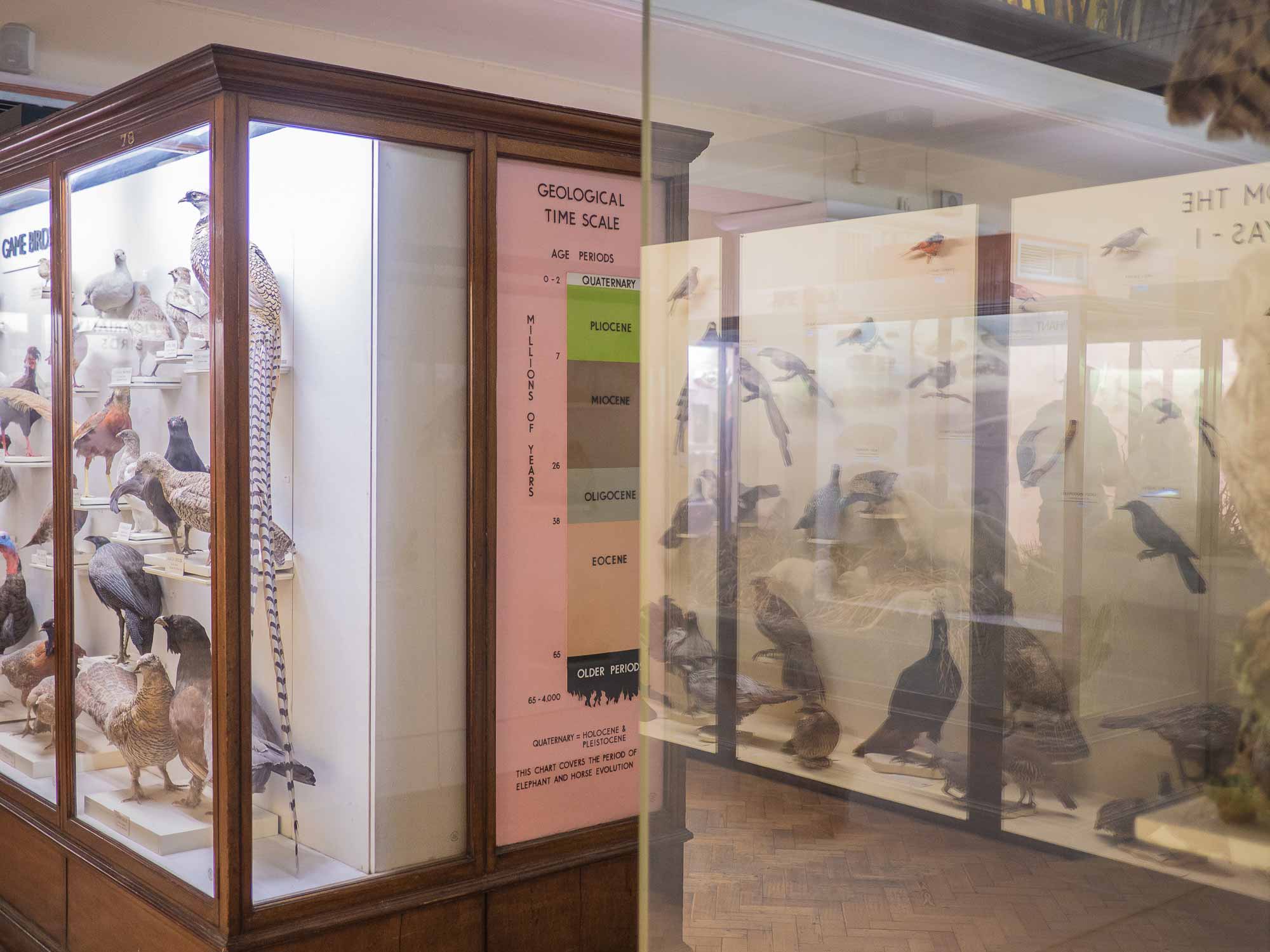
“Until the time of Aldrovandi, History was the inextricable and completely unitary fabric of all that was visible of things and of signs that had been discovered or lodged in them: to write the history of a plant or an animal was as much a matter of describing its elements or organs as describing the resemblances that could be found in it, the virtues that it was thought to possess, the legends and stories with which it had been involved, its place in heraldry, the medicaments that were concocted from it substance, the foods it provided, what the ancients recorded of it, and what travellers might have said of it.”
Michel Foucault, The Order of Things: An Archaeology of the Human Sciences [1966] translated from the French (London: Routledge, 2002)
Inside the Horniman Museum the potential place of breath is everywhere. It is conspicuous in its absence. The wind instruments in the music gallery are silent, shut away from any potential player. The myriad animal life in the natural history galleries breathe no more yet school children are led past by their teachers, learning lessons about life. Elsewhere ethnographic artefacts are far away from the places, uses, times, and people that made their existence. Glass-eyed, silent, inanimate; the objects in the display cabinets almost appear to be holding their breath.
The Museum of breath is an alternative guide to a number of collection items found in the Horniman Museum and was produced in both text and audio. The guide situates each object in relation to a fictional scenario. Texts act back upon objects as much as objects illustrate the texts. The project explores the relationship of object to text in museum display, highlighting the often primacy of text in framing and making meaning for museum objects. The work proposes authorities beyond the ordering and didactic line of the museum, situating objects in relation to wider networks of meaning, myth and experience.
Danielle Hewitt is an artist and architectural historian. She originally studied Fine Art at Goldsmiths and completed the Bartlett MA Architectural History in 2010, during which she took the module ‘Theorising Practices; Practising Theories’. In 2018 Danielle returned to the Bartlett to begin PhD research, supported by the Society of Architectural Historians of Great Britain. This research stems from an interest in things becoming other things, and uncertain moments in between. The project examines the little studied activities of material clearance and re-use on WWII bomb sites in London. Drawing from art practice, the research seeks to develop a material practice of writing for the handling of this subject matter; whilst posing historiographical questions about the status of fact and evidence in a history defined by loss and transformation.
Danielle is currently a Senior Lecturer in Critical and Contextual Studies at the Sir John Cass School of Art, Architecture and Design (London Metropolitan University) where she has taught across art, architecture and design courses and was formally Course Leader of the school’s interdisciplinary practice-led Masters programme. She previously taught a postgraduate architecture studio at Oxford Brookes University.
In my current research I ask questions about what constitutes evidence in my own artistic-historiographical practice. The notion of site as produced by site-writing: made complex by taking in the “remembered, the dreamed and the imagined, as well as observations of the ‘real’” (Rendell, 2011) provokes questions for architectural history about what stories might figure in historical narrative; where these might arise from and what voice or voices are situated in the telling. The thinking introduced by questions of situatedness in site-writing, for me, offers a productive place from which to challenge the totalising voice of the historian.
The Museum of Jurassic Technology, Culver City, California. http://mjt.org
Brian Catling, ‘Written Rooms and Pencilled Crimes’ in Catling, Brian, Fisher, and Griffiths, Future Exiles: three London poets (London: Palladian, 1992).
Susan Hiller, From The Freud Museum, (1991-1996).






































































